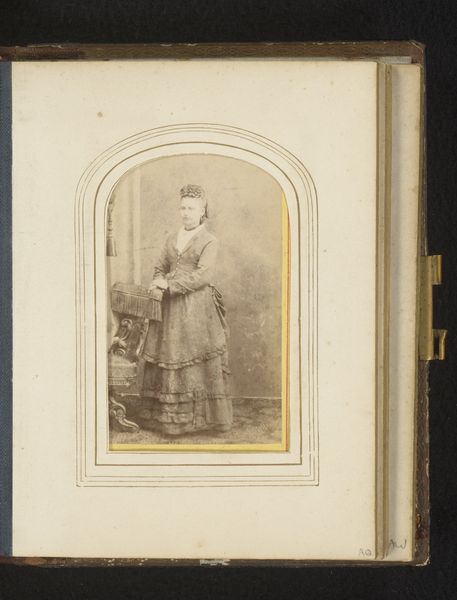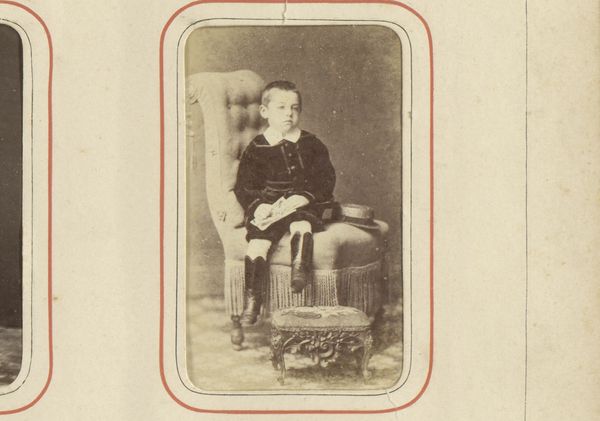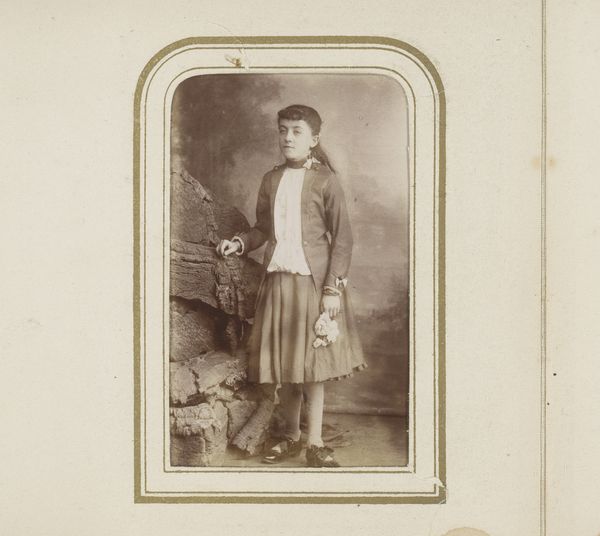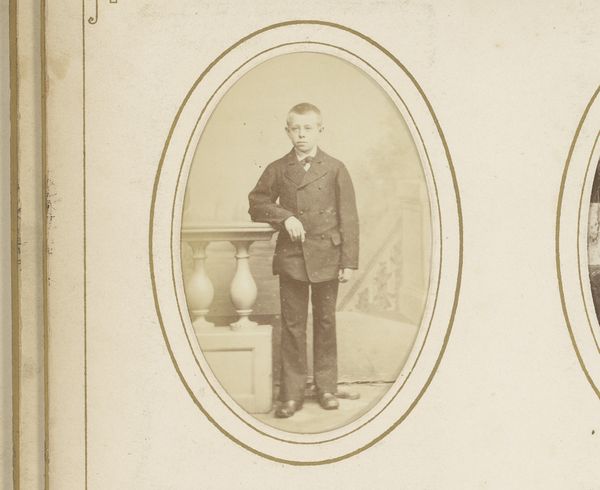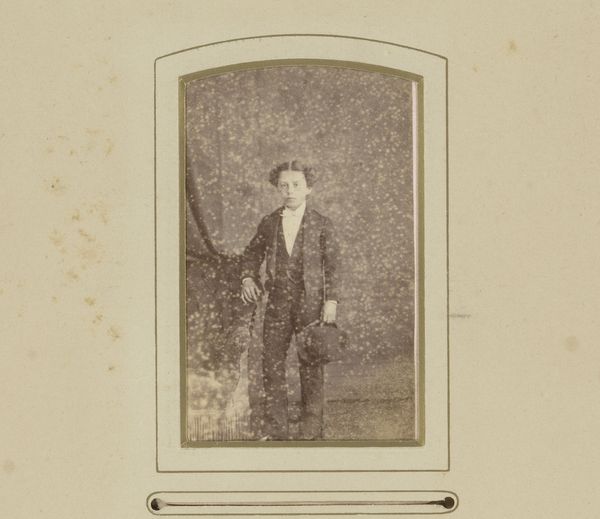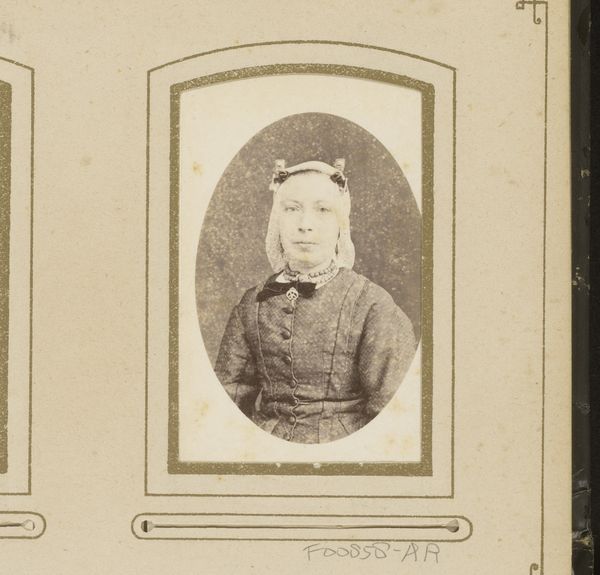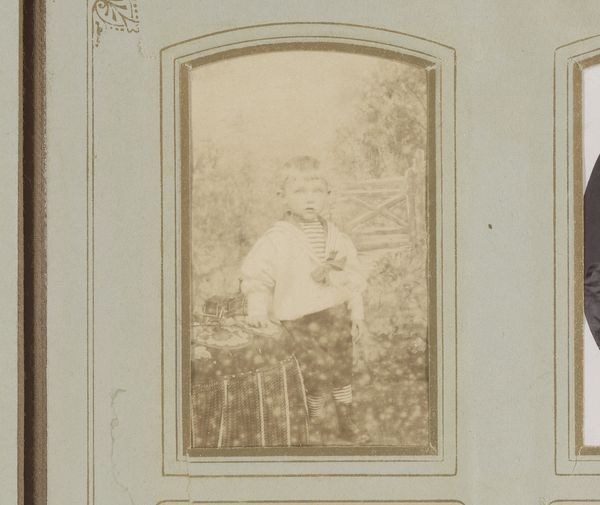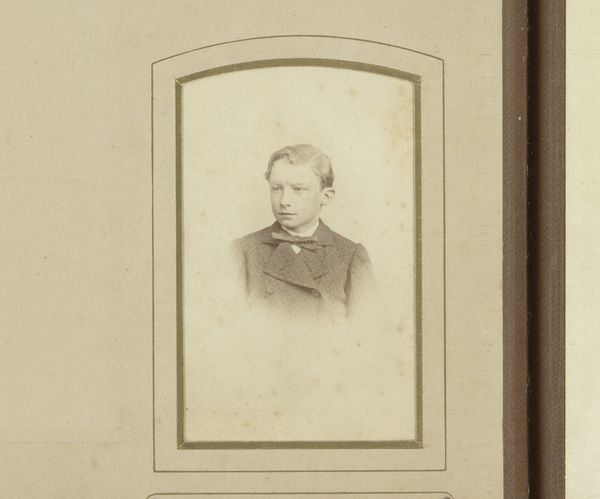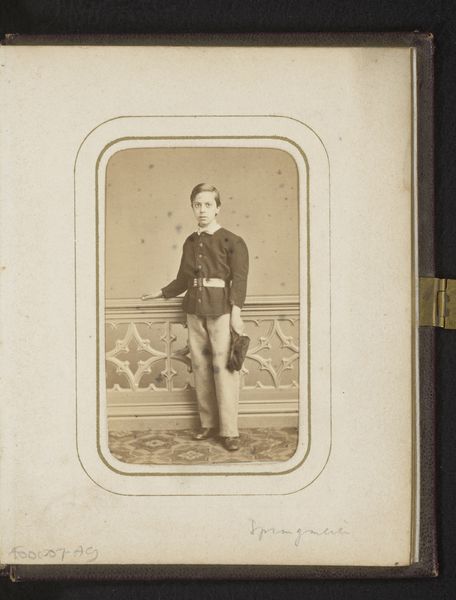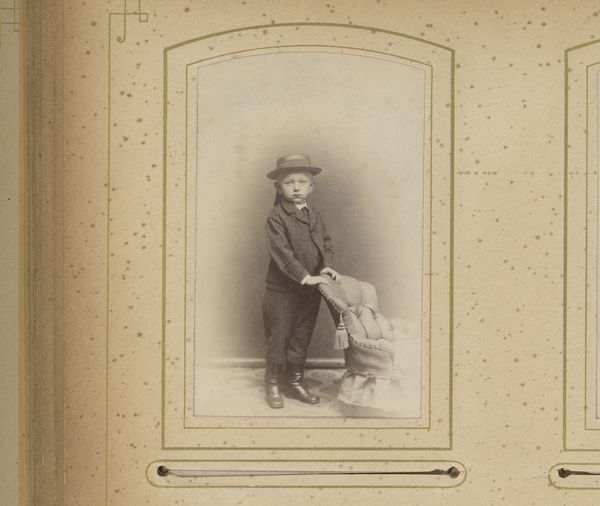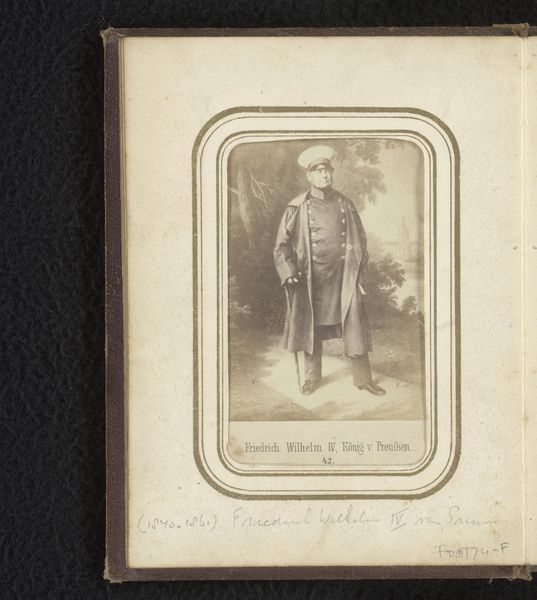
photography, albumen-print
#
portrait
#
photography
#
albumen-print
Dimensions: height 105 mm, width 63 mm
Copyright: Rijks Museum: Open Domain
Editor: This is a portrait from somewhere between 1870 and 1900, titled 'Portret van een man met mes en pijp, mogelijk fotograaf Louis Martin,' made with the albumen print process. The man is striking-- sort of stern. He's holding a large knife or maybe a small sword and smoking a pipe. What's your take on this piece? Curator: The visual cues definitely speak to masculinity and status in the late 19th century. But what does it mean to stage oneself in this way, given photography’s relatively new role? Does this image uphold or challenge the era’s rigid codes of gender and class? Think about it: a "man with a knife" -- that reads one way; however, when paired with the possible profession of "photographer", does the meaning shift, opening up new avenues to consider Martin's identity, his chosen posture, and how this work addresses issues related to social representation? Editor: I guess I hadn’t thought about it that way. Maybe it’s not so much about proving something as performing a role... like on a stage? Curator: Precisely. The photograph as a tool for constructing identity, performing it, even subverting expectations. Who gets to control the narrative? Is this simply a commercial transaction with the sitter requesting a standard pose or does the photographer exert their own authorial intent in relation to prevailing societal norms of the time? Editor: So, while it seems simple on the surface, the photograph sparks a conversation about identity, performance, and the control of one's image. I guess I walked into this with a set of preconceived notions about "masculinity," and completely missed the deeper social issues involved! Curator: Exactly! We have to consider images as products of their time. Always interrogate the visual, the social, and the historical contexts together. This way of engaging provides valuable insight not just for photographic portraits but all images from that period, revealing not only the social milieu in which images were made, but the biases that continue to perpetuate narratives surrounding gender and representation today.
Comments
No comments
Be the first to comment and join the conversation on the ultimate creative platform.
